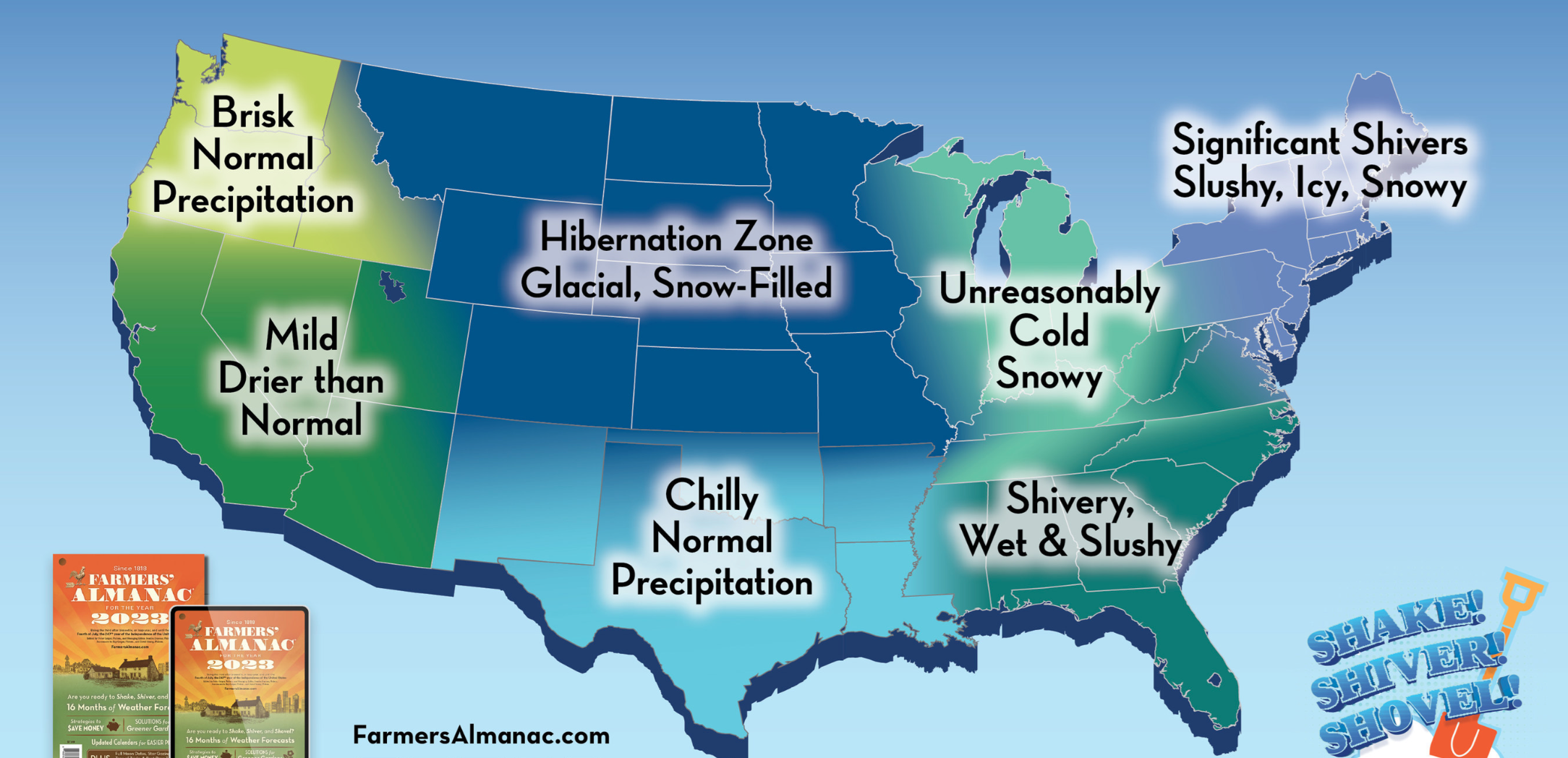The Farmers’ Almanac is releasing its 2023 winter weather forecast earlier than ever. This year’s early forecast is in response to the extreme summer weather broiling the country. As the growing concerns of the rising costs of heating oil grow, the Farmers’ Almanac is promising a tough winter. According to the Almanac, this winter will be filled with plenty of shaking, shivering, and shoveling.
How cold?
Shivery temperatures are predicted to rattle warm weather seekers in the Southeast and South Central states, but the real cold weather might send people in the Great Lakes, Northeast, and North Central regions hibernating. According to the Almanac, I forecast the North Central states to experience extremely cold temperatures, (possibly 40° below zero!)—especially during mid-January.
Areas in the western half of the country should escape the major cold. This area will have an overall forecast of brisk temperatures predicted in the Northwest and mild temperatures in the Southwest.
A stormy season
The Farmers’ Almanac suggests a stormy winter is on schedule especially for the eastern half of the country. For some areas, this may mean snow, but for others, including the southeast, it will cause more slush and mush.
Areas south of the storm track (much of the Southeast) will see frequent storms. This will bring cold rains and a wintry mix of wet snow, sleet, ice, freezing rain—as well as chilly temperatures. For the Southeast most of the cold will happen during the month of January. Fortunately, for the snowbirds, February will likewise warm the region to near-normal winter season temperatures overall.
How does the Farmers’ Almanac make its forecasts?
Last year, the Almanac predicted many of the 2021-2022 winter storms, most notably: the early-season nor’easter in the end of October, and the unusual blizzard in the last week of April (in parts of Montana, Wyoming, and the Dakotas).
But how do they do it?
The Farmers’ Almanac editors deny using any type of computer satellite tracking equipment, weather lore, or groundhogs. Instead, they use a specific and reliable set of rules that were developed back in 1818 by astronomer and mathemetician, David Young. He was the Almanac’s first editor. These rules have been altered slightly and turned into a formula that is both mathematical and astronomical.
The formula takes into consideration things like sunspot activity, tidal action of the Moon, the position of the planets, and other factors. The only person who knows the exact formula is the Farmers’ Almanac weather prognosticator. He goes by the pseudonym of Caleb Weatherbee. To protect this proprietary formula, the editors of the Farmers’ Almanac keep both Caleb’s true identity and the formula a closely guarded brand secret.
The Farmers’ Almanac editors state this formula has been time-tested, challenged, and approved for nearly two centuries. It is the oldest source of consecutively published weather forecasts, even longer than the National Weather Service. Unlike news, government, or commercial weather service, the Almanac’s forecasts are calculated two years in advance. Once the new edition is printed, the editors never go back to change or update its forecasts.
Check out the On the Money page to see some of the weather events predicted by the Farmers’ Almanac.
More on Modern Globe
- March Job Fair to Connect Employers and Veterans in the Tampa Bay Area
- Move Over, Gyms and Pools: Renters Want Pet Areas and Happy Hour
- Climate First Bank Reduces Solar Loan Rates for Increased Access to Sustainable Living
- CSHP Offers New Veteran Training Opportunities
- Tampa Property Taxes Have Surged Nearly 60% in Tampa Since 2019



























